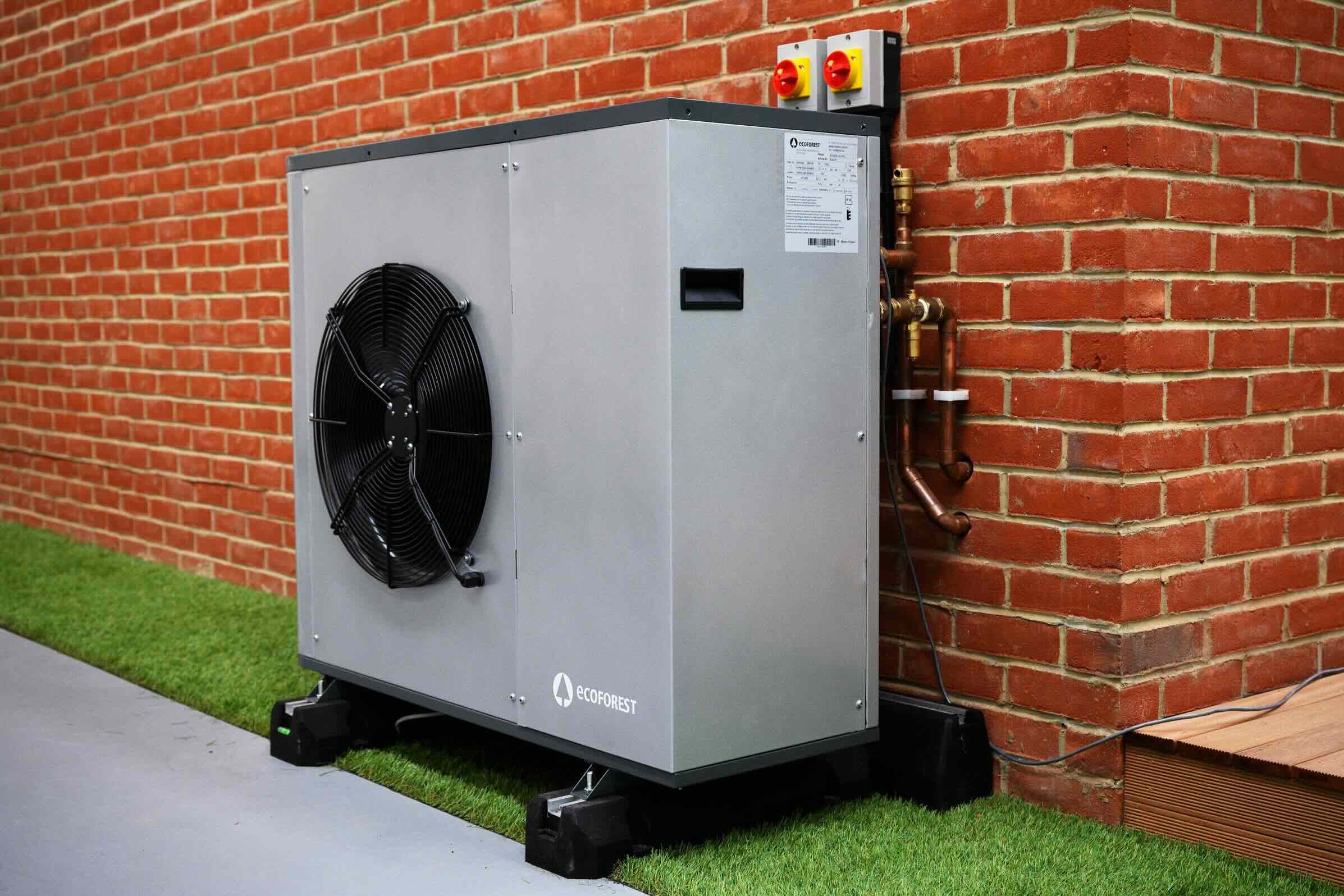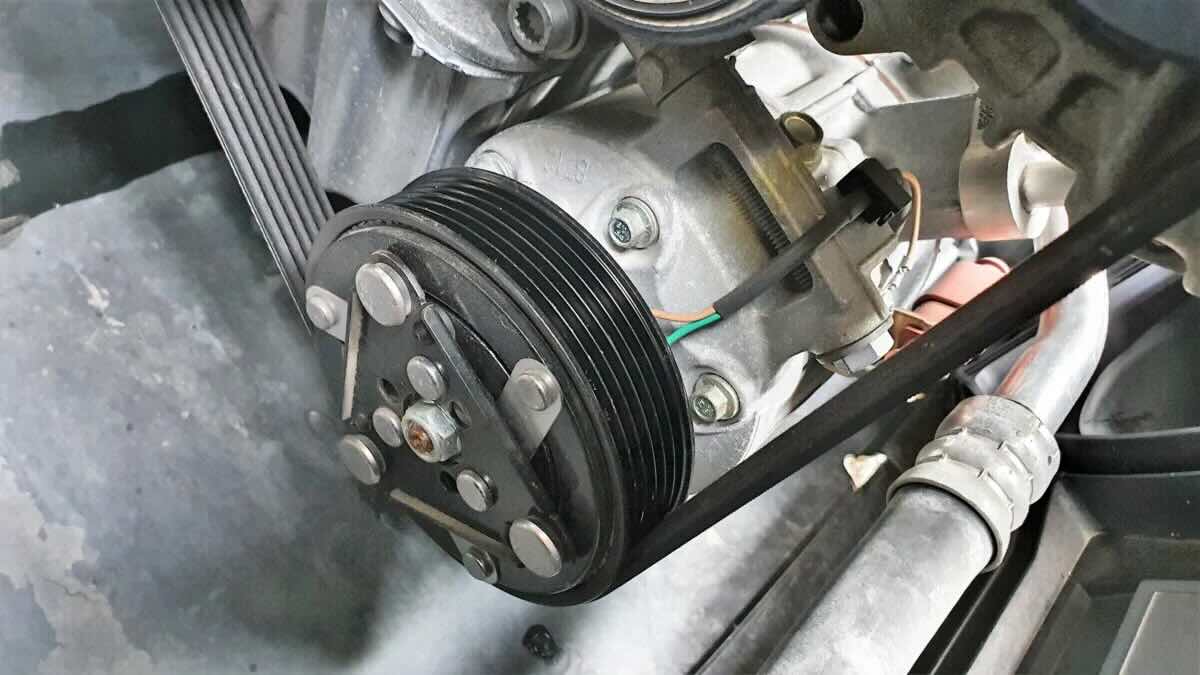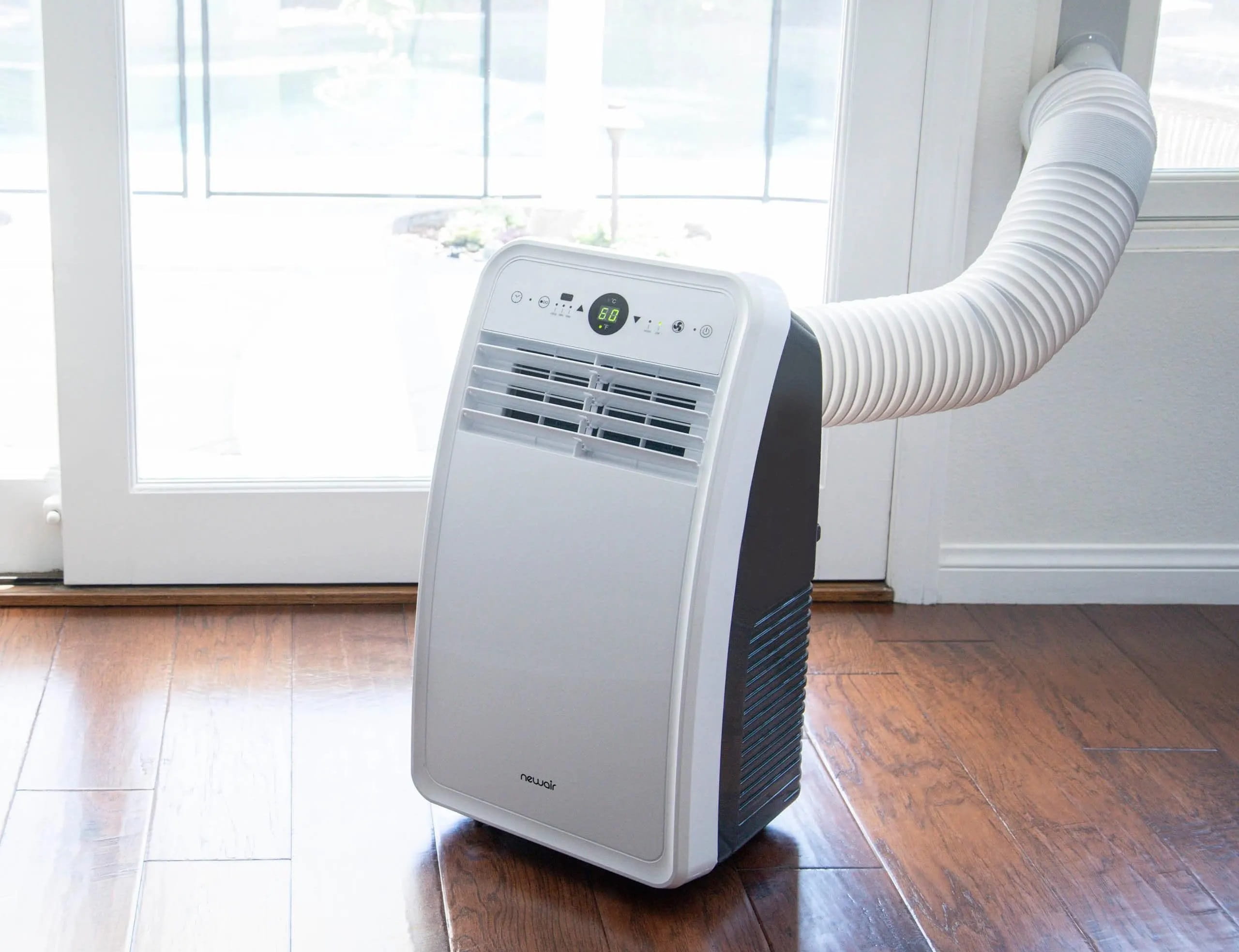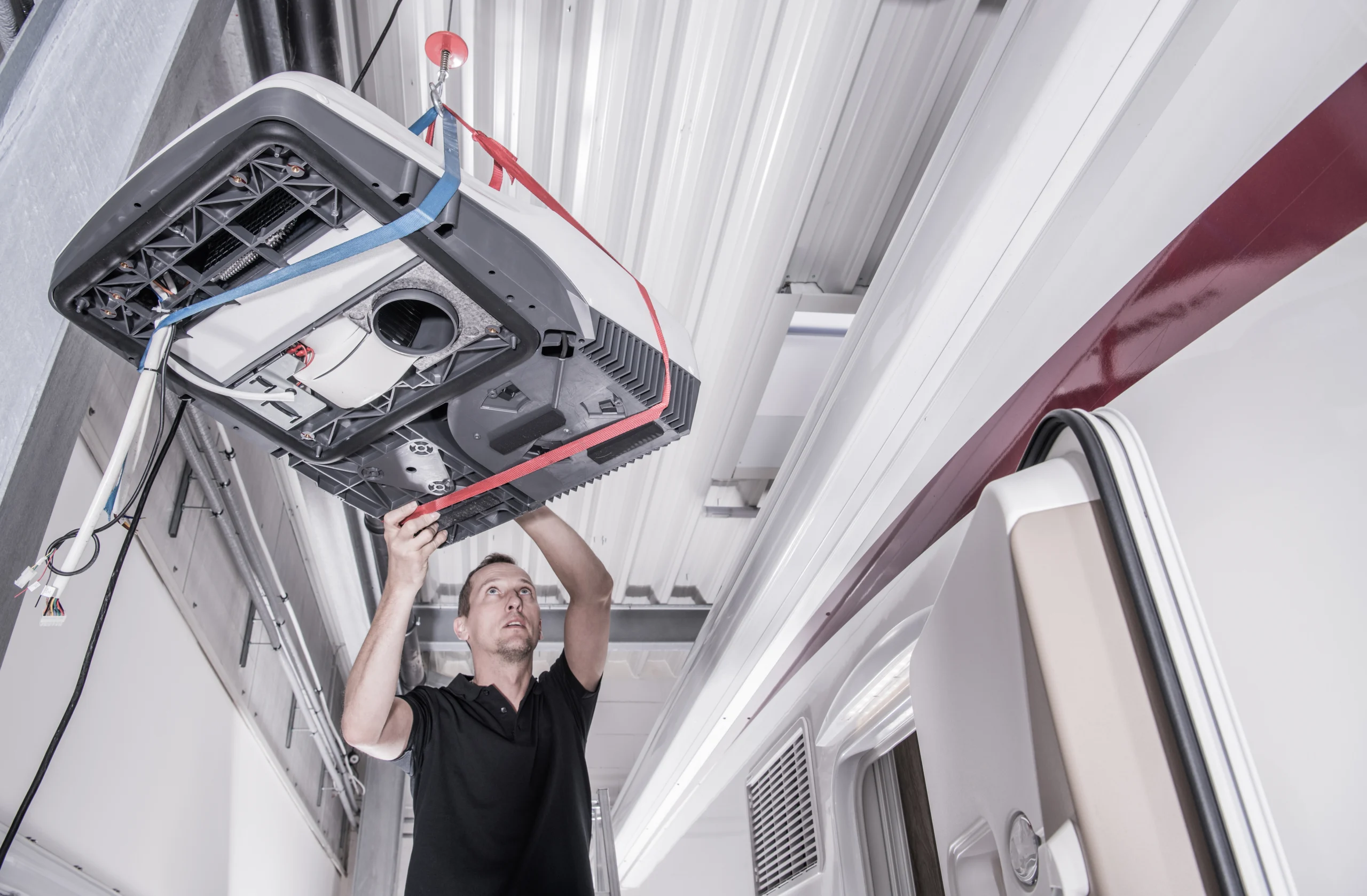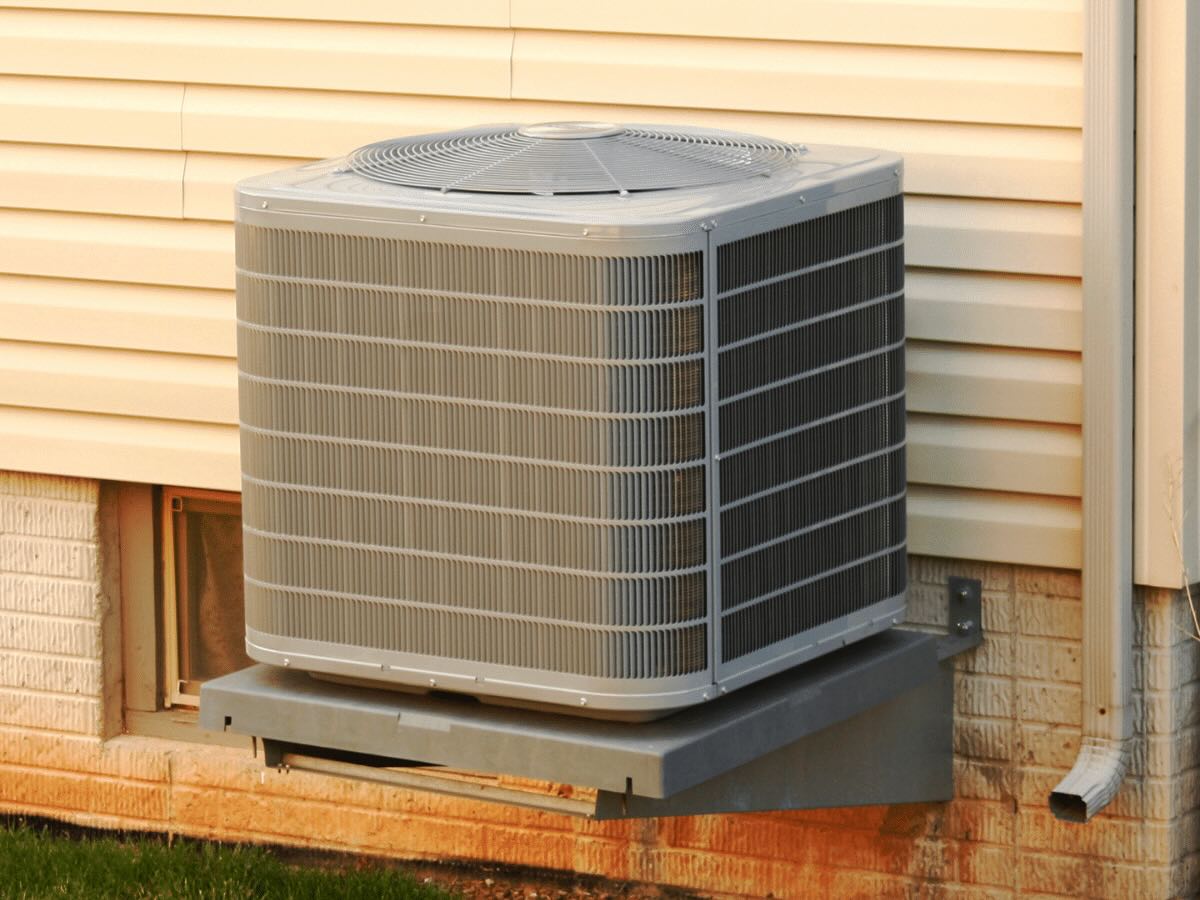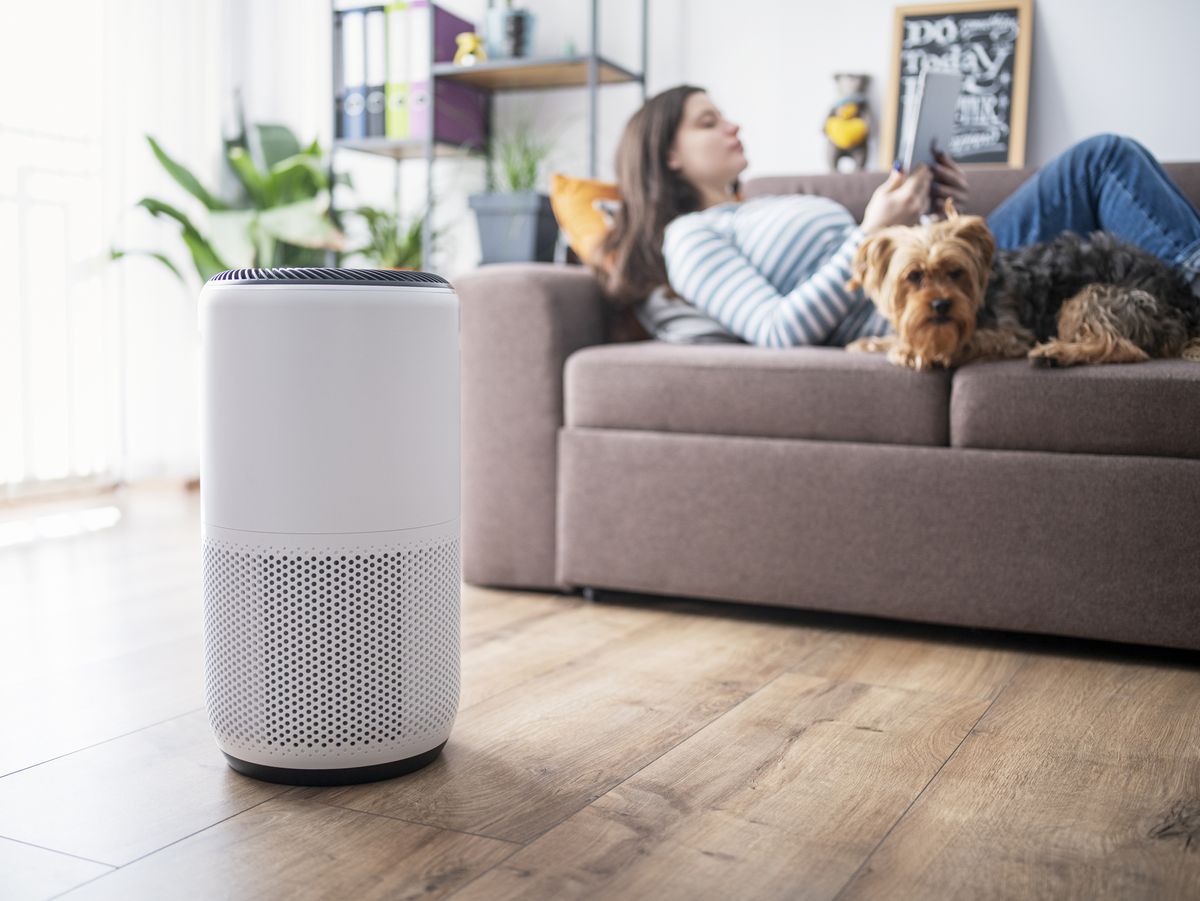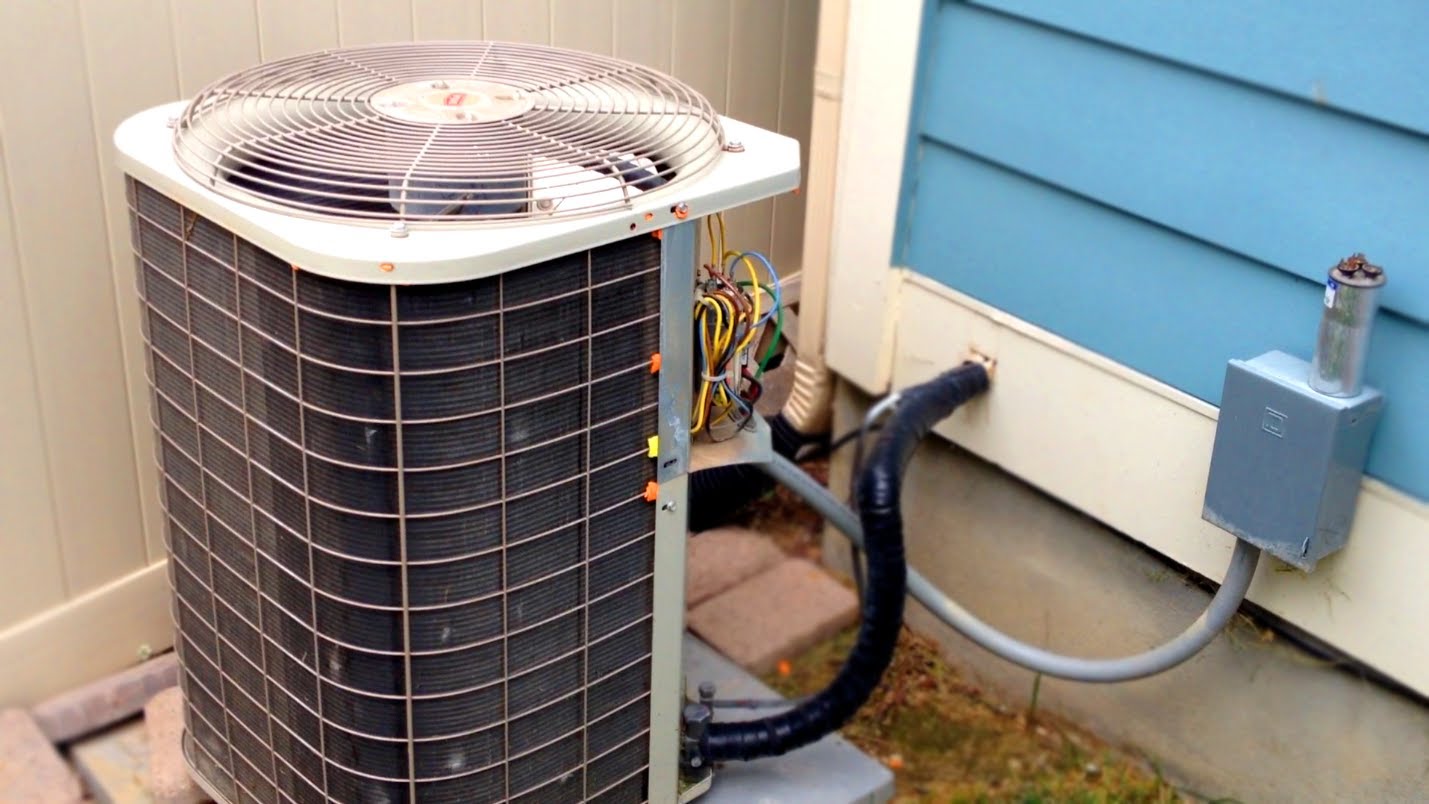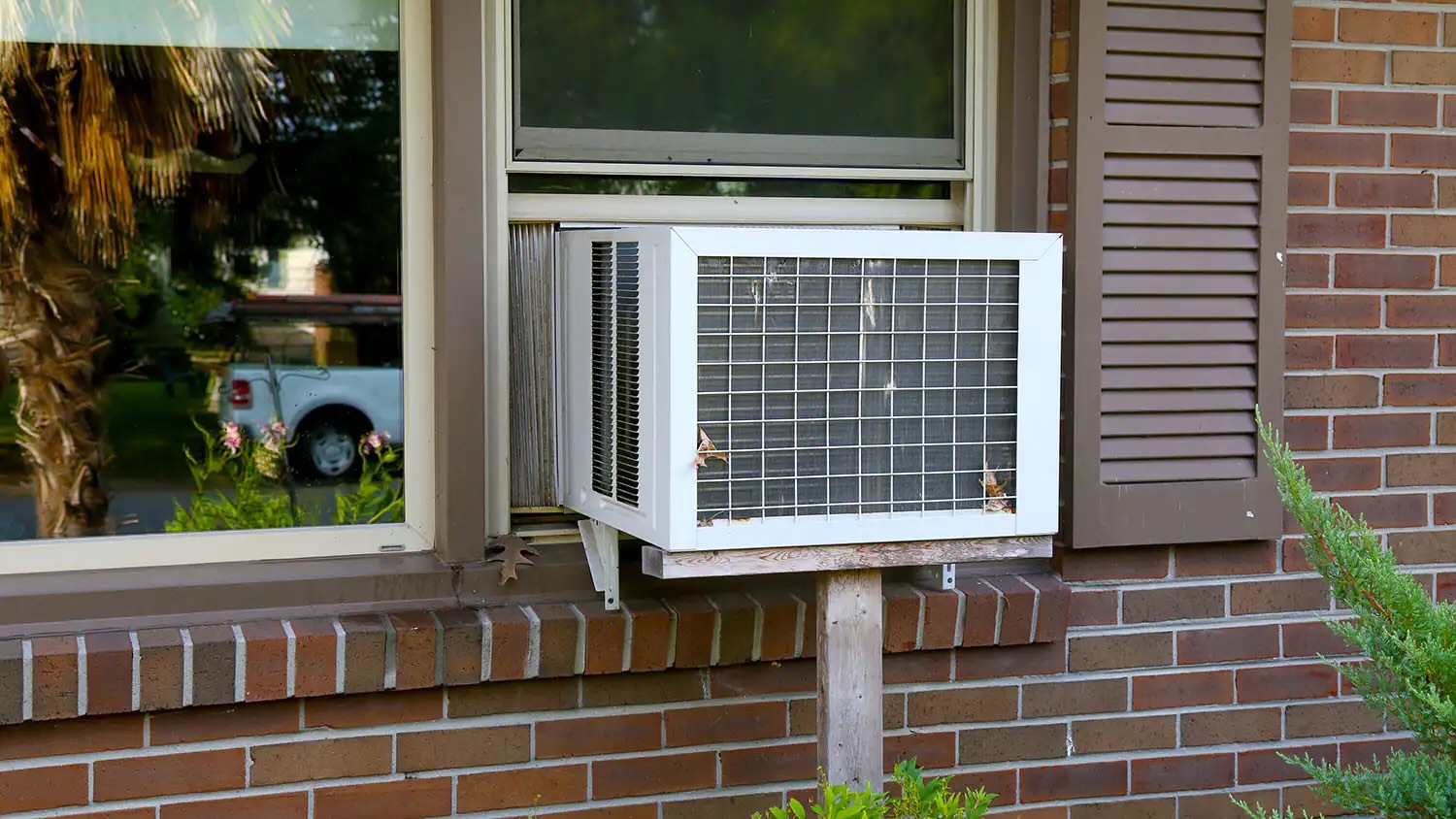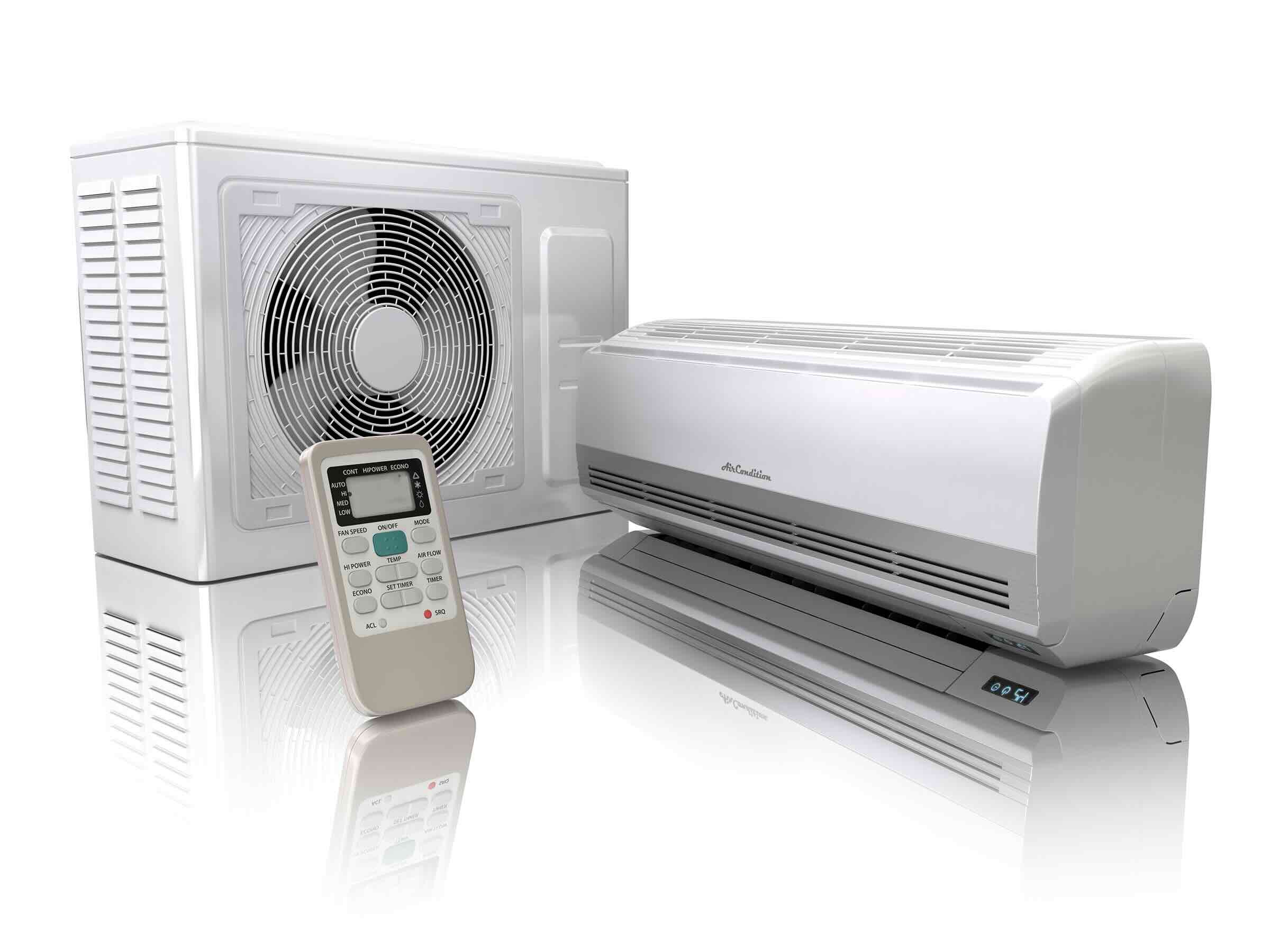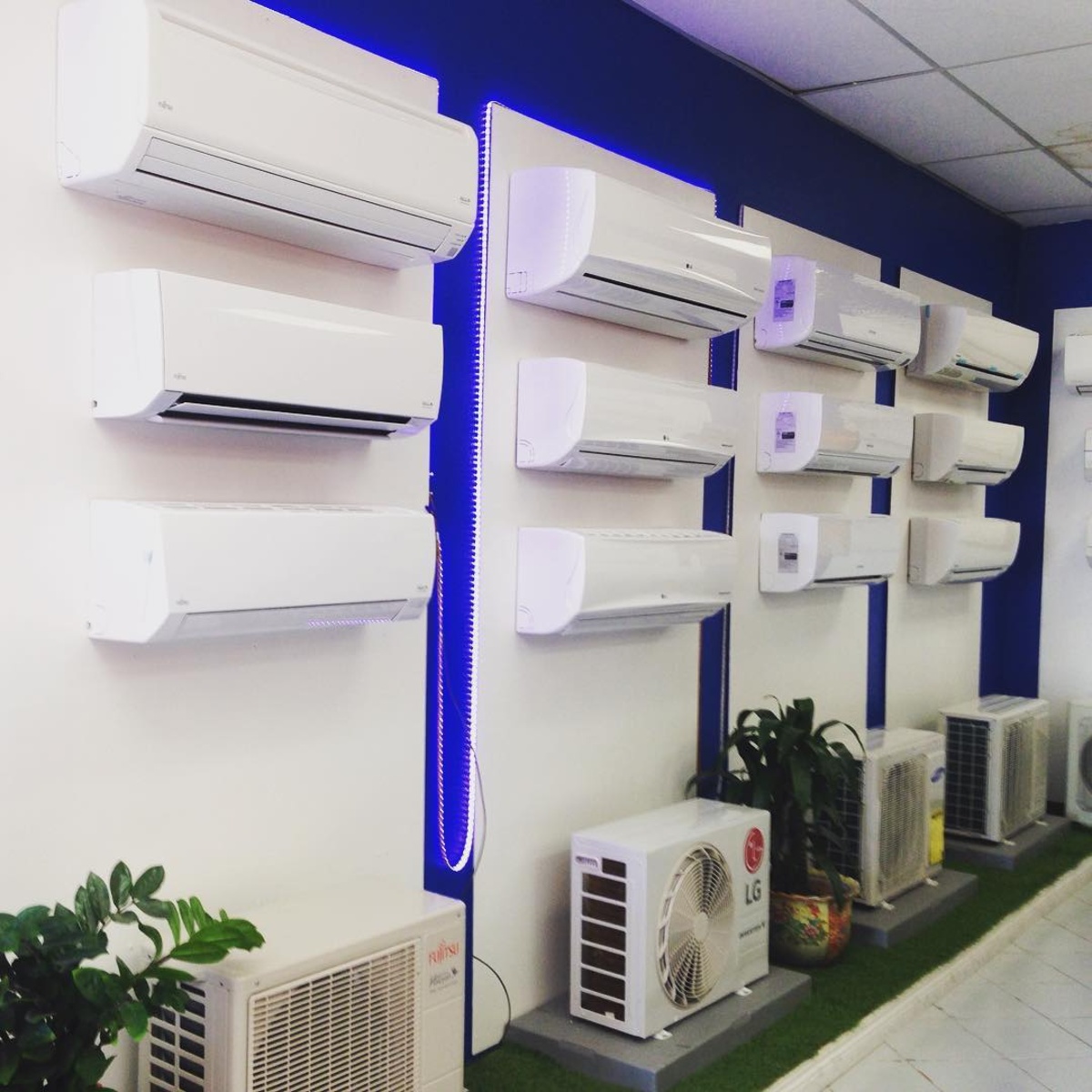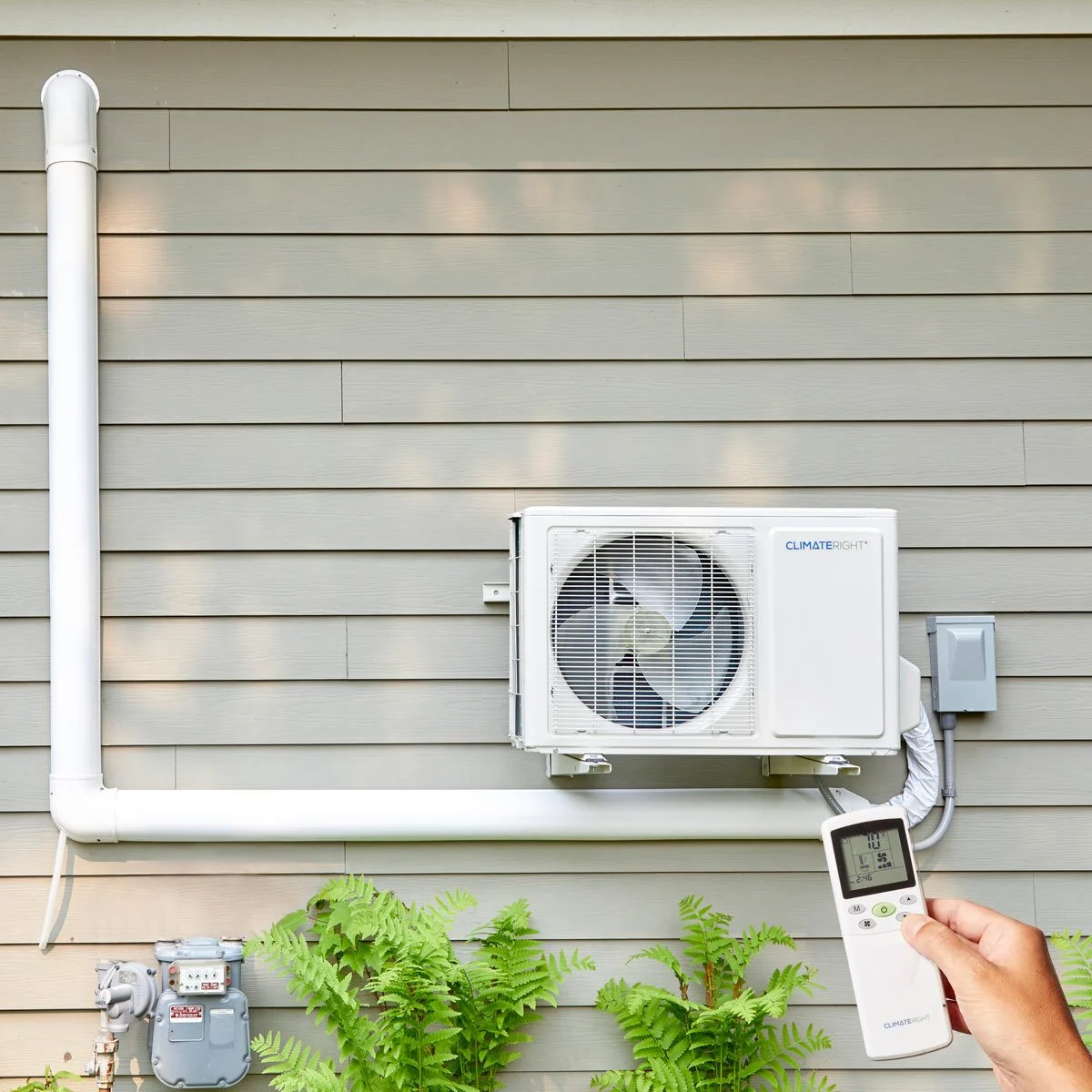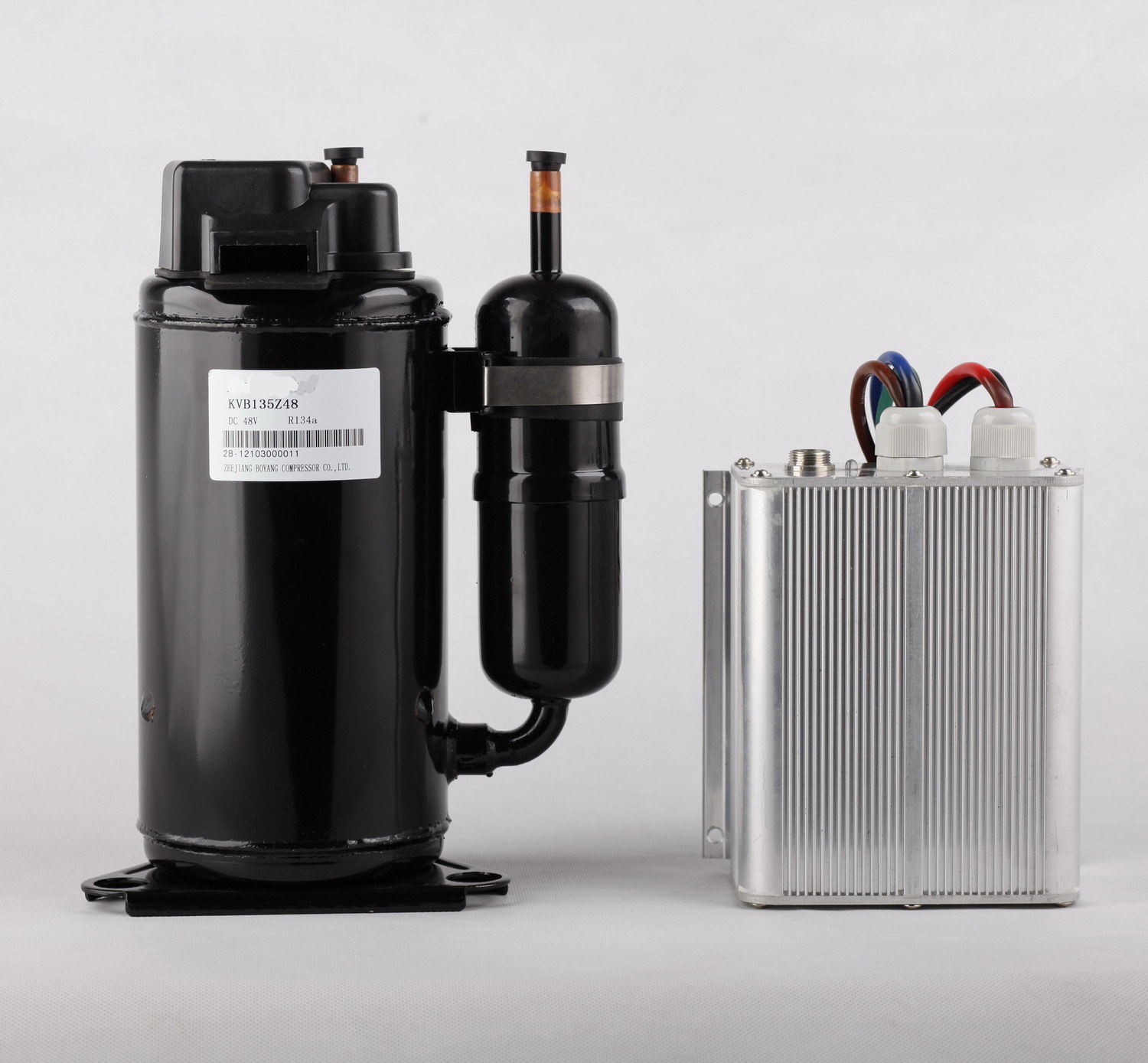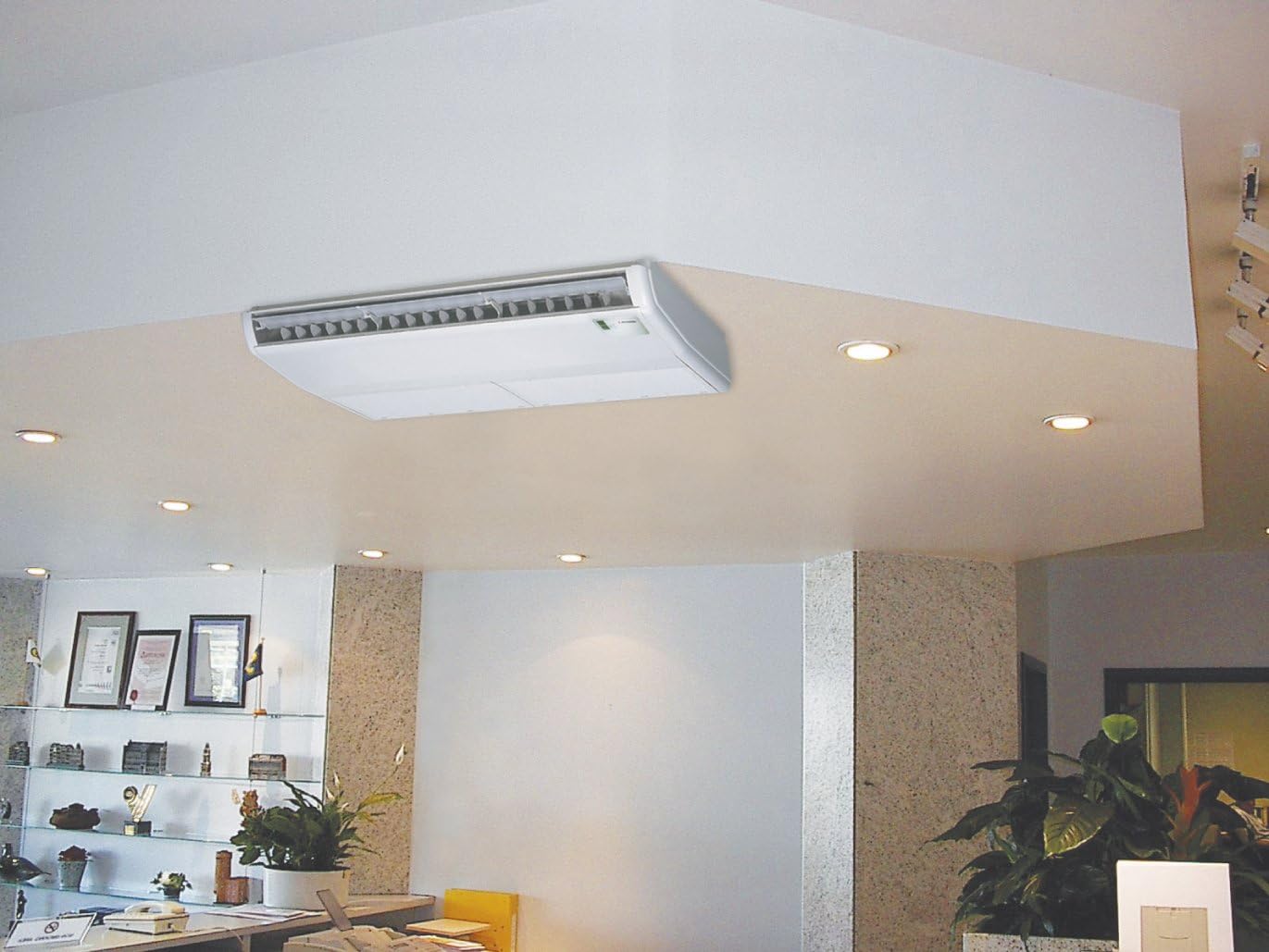Home>Home Maintenance>How Does A Ductless Air Conditioner Work
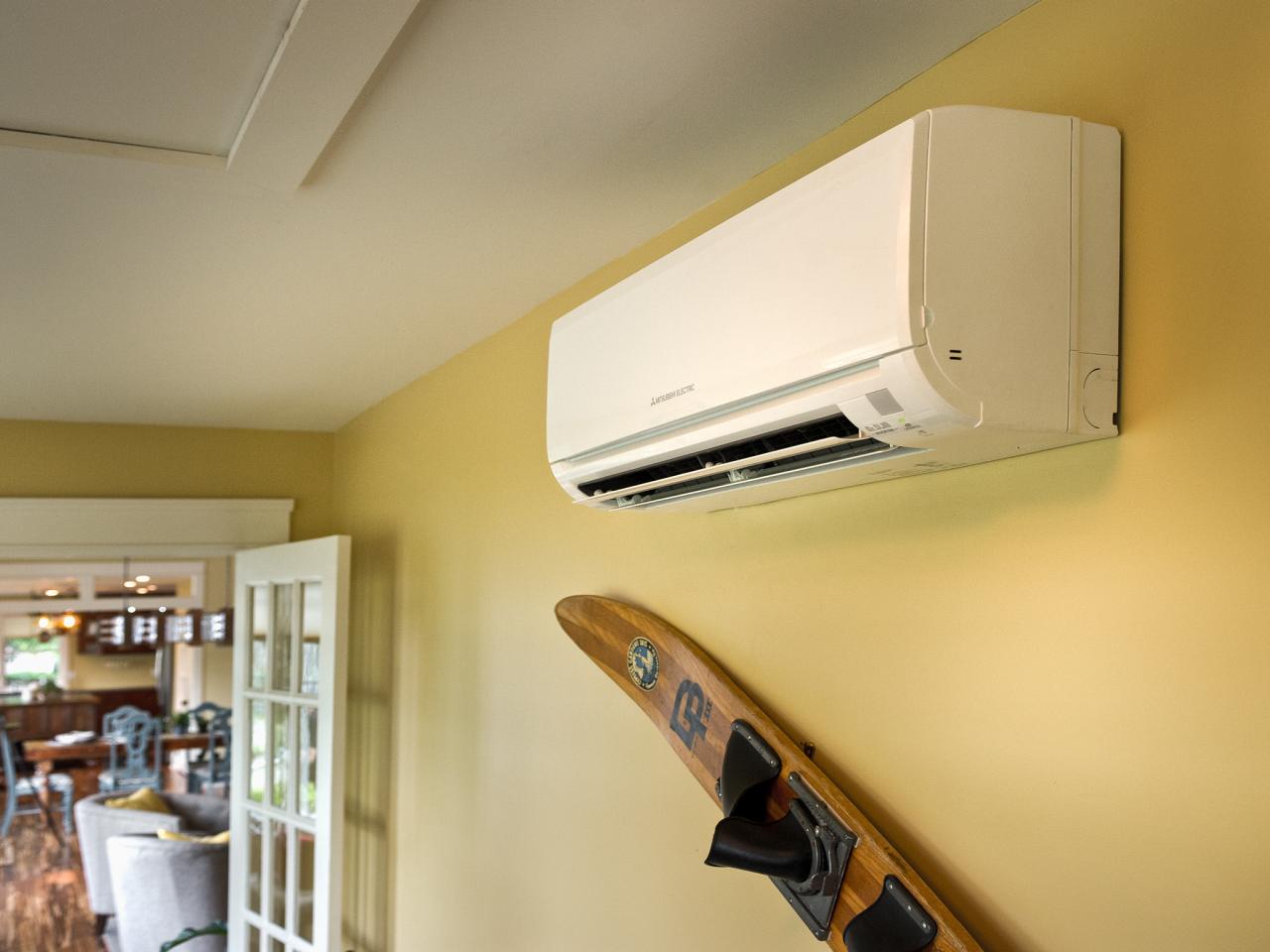

Home Maintenance
How Does A Ductless Air Conditioner Work
Modified: September 1, 2024
Discover how a ductless air conditioner works to cool your home, improving energy efficiency and providing optimal home maintenance.
(Many of the links in this article redirect to a specific reviewed product. Your purchase of these products through affiliate links helps to generate commission for Storables.com, at no extra cost. Learn more)
Introduction
Home maintenance is an essential aspect of ensuring the comfort and longevity of your living space. One of the critical components of home maintenance is maintaining a comfortable indoor temperature, especially during hot summer months. In this regard, air conditioning systems play a vital role in keeping our homes cool and pleasant. Among the various types of air conditioners available in the market, ductless air conditioners have gained significant popularity in recent years. But what exactly is a ductless air conditioner, and how does it work?
Ductless air conditioners, also known as ductless mini-split systems, offer a flexible and efficient solution for cooling individual rooms or zones within a home. Unlike traditional central air conditioning systems that rely on a network of ducts to distribute cooled air, ductless air conditioners work without the need for ductwork. This makes them a versatile alternative for homeowners looking to cool specific areas or add air conditioning to homes that lack existing ductwork.
The primary components of a ductless air conditioner include an indoor unit, an outdoor unit, and a refrigerant line that connects the two. The indoor unit, installed within the room or zone to be cooled, contains the evaporator coil and a fan to blow the cooled air into the space. The outdoor unit houses the condenser coil, compressor, and expansion valve, responsible for extracting heat from the indoor air and dissipating it outside. The refrigerant line carries the refrigerant fluid between the indoor and outdoor units, facilitating the cooling process.
Key Takeaways:
- Ductless air conditioners provide targeted cooling, energy efficiency, and improved indoor air quality. They are a versatile and convenient option for maintaining comfort in specific areas of a home.
- Proper maintenance, including regular cleaning and professional inspections, is essential for ensuring the optimal performance and longevity of ductless air conditioners. Addressing common issues promptly can prevent further damage and maintain a comfortable indoor environment.
What is a Ductless Air Conditioner?
A ductless air conditioner, as the name suggests, is an air conditioning system that operates without the need for ductwork. It is a split system that consists of an indoor unit and an outdoor unit, connected by a refrigerant line. Ductless air conditioners are designed to cool specific areas or zones within a home and offer several advantages over traditional central air conditioning systems.
Unlike central AC systems that rely on a network of ducts to distribute cooled air throughout the entire home, ductless air conditioners allow for targeted cooling. This means you can adjust the temperature in specific rooms or areas independently, providing personalized comfort and energy efficiency. Additionally, ductless systems are easier to install compared to ducted systems, as they require minimal modifications to the existing structure.
Ductless air conditioners are commonly used in situations where installing ductwork is not feasible or desirable. For example, older homes that lack existing ductwork or have limited space for duct installation can benefit from ductless systems. They are also ideal for home additions, converted basements, or garages that have been transformed into living spaces. Additionally, ductless AC offers a great solution for multi-level homes where different levels may require different cooling levels.
Another advantage of ductless air conditioners is their energy efficiency. Since the cooled air is directly delivered to the desired zone without being pushed through ducts, there is minimal energy loss. This results in lower energy consumption and reduced utility bills. Additionally, ductless systems often come with features such as programmable timers and zoning options, allowing for further energy savings by only cooling occupied areas and adjusting temperatures based on daily routines.
Furthermore, ductless air conditioners offer enhanced indoor air quality. Traditional ducted systems can accumulate dust, allergens, and other pollutants over time, which are then distributed throughout the home. Ductless systems eliminate this concern as they do not rely on ducts to circulate air, reducing the chances of airborne contaminants. In addition, many ductless models come equipped with advanced filtration systems that help trap and remove allergens, improving the overall indoor air quality.
Overall, ductless air conditioners provide a flexible and efficient cooling solution for homes without existing ductwork or those looking for zone-specific temperature control. Their energy efficiency, ease of installation, and improved indoor air quality make them an attractive option for homeowners seeking convenience and comfort.
Components of a Ductless Air Conditioner
Ductless air conditioners are made up of several key components that work together to provide efficient and effective cooling. Understanding these components can help homeowners and HVAC professionals properly maintain and troubleshoot ductless mini-split systems.
1. Indoor Unit: The indoor unit is installed within the room or zone to be cooled. It typically consists of an evaporator coil, a fan to blow the cooled air into the space, and a control panel. The evaporator coil is responsible for absorbing the heat from the indoor air and cooling it down.
2. Outdoor Unit: The outdoor unit contains the condenser coil, compressor, and expansion valve. The condenser coil releases the heat absorbed from the indoor air to the outside environment. The compressor circulates the refrigerant, compressing it to raise its temperature and pressure. The expansion valve controls the flow and pressure of the refrigerant as it moves between the indoor and outdoor units.
3. Refrigerant Lines: The indoor and outdoor units are connected by refrigerant lines, usually made of copper. These lines transport the refrigerant between the units in a continuous loop, allowing for the transfer of heat and cooling of the indoor air. Refrigerant lines must be properly insulated to prevent energy loss and ensure optimal system performance.
4. Control Panel: The control panel on the indoor unit allows users to set temperature preferences, adjust fan speed, and control other system settings. Some ductless air conditioners also offer remote controls for added convenience.
5. Remote Control: Many ductless air conditioner models come with a handheld remote control that allows users to adjust settings from a distance. This feature is particularly useful when the indoor unit is installed in a hard-to-reach location or for individuals with mobility restrictions.
6. Air Filters: Ductless air conditioners incorporate air filters to improve indoor air quality by trapping dust, allergens, and other particles. Regular cleaning or replacement of air filters is necessary to maintain optimal system performance and ensure clean air circulation.
7. Drainage System: Ductless air conditioners produce condensate as part of the cooling process. A drainage system, usually consisting of a drain pan and a condensate drain line, is used to collect and remove the condensate. Proper maintenance of the drainage system is essential to prevent water leakage and potential damage to the indoor unit and surrounding areas.
Understanding the components of a ductless air conditioner can help homeowners identify potential issues and perform basic maintenance tasks. Regular cleaning, filter replacement, and professional inspections can prolong the lifespan of the system and ensure efficient operation.
How Does a Ductless Air Conditioner Cool the Air?
Ductless air conditioners work on the same principle as traditional air conditioning systems, using refrigeration to remove heat from indoor air and deliver cool air into the room or zone. However, they do so without the need for ductwork, offering targeted and efficient cooling.
The process begins with the indoor unit of the ductless air conditioner. This unit contains an evaporator coil, which acts as a heat exchanger. The evaporator coil is chilled by the refrigerant flowing through it. When warm indoor air enters the unit, it passes over the cold evaporator coil. As the air comes into contact with the chilled coil, the heat from the air is absorbed by the refrigerant and transferred to the refrigerant fluid.
The absorbed heat vaporizes the refrigerant, transforming it from a low-pressure, low-temperature state to a high-pressure, high-temperature gas. The heated refrigerant vapor is then transported to the outdoor unit through the refrigerant lines. This is where the heat removal process occurs.
In the outdoor unit, the refrigerant flows through a condenser coil. The condenser coil releases the heat absorbed from the indoor air to the outside environment. A fan blows air across the condenser coil, allowing the heat to dissipate into the outdoor air. As the heat is expelled, the refrigerant is cooled and condensed back into a high-pressure liquid state.
The condensed refrigerant then passes through an expansion valve, which regulates its flow and pressure. The expansion valve reduces the pressure of the refrigerant, causing it to rapidly cool down. The cooled refrigerant then returns to the indoor unit through the refrigerant lines, ready to absorb more heat from the indoor air and repeat the cooling cycle.
As the refrigerant continues its cycle, the indoor unit’s fan blows over the cooled evaporator coil, causing the heat from the indoor air to be absorbed by the refrigerant. The process repeats, continuously cooling the air in the room or zone and maintaining the desired temperature.
It’s important to note that ductless air conditioners offer individual temperature control for each room or zone they are installed in. This means different areas of a home can be cooled or heated to different temperatures according to specific comfort preferences.
By utilizing the principles of refrigeration and eliminating the need for ductwork, ductless air conditioners provide efficient and effective cooling for specific areas or zones within a home, delivering personalized comfort and energy savings.
Benefits of Ductless Air Conditioners
Ductless air conditioners, also known as ductless mini-split systems, provide numerous advantages over traditional central air conditioning systems. Whether you’re considering installing a new cooling system or looking to upgrade your existing one, here are some key benefits to consider when it comes to ductless air conditioners:
1. Energy Efficiency: Ductless air conditioners are highly energy-efficient compared to central AC systems. With traditional central air conditioning, cooled air is distributed through ducts, resulting in potential energy loss. Ductless systems eliminate these energy losses by delivering cooled air directly to the desired space, leading to energy savings and lower utility bills.
2. Zoned Cooling: Ductless systems provide zoned cooling, allowing you to set different temperatures for individual rooms or zones. This level of customization ensures personalized comfort and energy efficiency. You can cool only the rooms that are being used, avoiding wasted energy on unoccupied areas of your home.
3. Flexible Installation: Ductless air conditioners are easier to install compared to traditional central AC systems that require extensive ductwork. Ductless systems typically consist of an indoor unit mounted on the wall or ceiling and an outdoor unit. The refrigerant lines between the units are small and flexible, requiring only a small hole to connect them. This makes ductless systems an ideal solution for homes without existing ductwork or for room additions and renovations.
4. Improved Indoor Air Quality: Ductless air conditioners incorporate advanced filtration systems that help capture allergens, dust, and other airborne particles. These filters improve indoor air quality by reducing the circulation of pollutants throughout your home. This is especially beneficial for individuals with respiratory conditions or allergies, providing a healthier and more comfortable living environment.
5. Quiet Operation: Ductless air conditioners are known for their quiet operation. The indoor units are designed with advanced noise-reducing technology, ensuring minimal disturbance while you enjoy comfortable temperatures in your home.
6. Fewer Maintenance Requirements: Ductless air conditioners require less maintenance compared to central AC systems. The filters should be regularly cleaned or replaced to ensure optimal performance and indoor air quality. Additionally, professional maintenance checks are recommended to keep the system running efficiently and to address any potential issues.
7. Improved Home Design: Unlike traditional AC systems that require bulky ductwork, ductless air conditioners offer a sleek and non-intrusive design. The indoor units are compact and can be installed discreetly on walls or ceilings, allowing for more flexibility in home design and preserving the aesthetics of your living space.
The benefits of ductless air conditioners make them an appealing choice for homeowners looking for efficient and customizable cooling solutions. With enhanced energy efficiency, zoned cooling, improved indoor air quality, and easy installation, ductless systems provide comfort, savings, and convenience for any home.
Regular maintenance of your ductless air conditioner, such as cleaning or replacing the filters, can help improve its efficiency and extend its lifespan.
Read more: How Does A Ductless Range Hood Work?
Installation of a Ductless Air Conditioner
Installing a ductless air conditioner, also known as a ductless mini-split system, is a relatively straightforward process that requires professional expertise. Here are the key steps involved in the installation of a ductless air conditioner:
1. Assessing the Space: Before installing a ductless air conditioner, a professional HVAC technician will assess the space to determine the appropriate location for both the indoor and outdoor units. Factors such as the size of the room, insulation levels, and electrical requirements will be taken into consideration.
2. Mounting the Indoor Unit: The indoor unit, also known as the evaporator unit, should be mounted on a wall or ceiling within the room or zone to be cooled. The technician will ensure proper placement for optimal airflow, taking into account clearance requirements and avoiding any obstructions.
3. Installing the Outdoor Unit: The outdoor unit, which includes the condenser coil and compressor, is typically installed on a stable surface outside the home. The technician will ensure proper placement for efficient cooling and easy access for maintenance and repairs. The outdoor unit should be positioned away from windows and other potential noise-sensitive areas.
4. Connecting Refrigerant Lines: Refrigerant lines, usually made of copper, are used to connect the indoor and outdoor units. These lines carry the refrigerant fluid between the two units and facilitate the cooling process. The technician will carefully install and insulate the refrigerant lines to prevent any energy losses and ensure efficient operation.
5. Electrical Connection: Proper electrical connections are crucial for the safe and efficient operation of the ductless air conditioner. The technician will connect the indoor and outdoor units to a dedicated electrical circuit, ensuring that the system has the required voltage and amperage for reliable performance.
6. Testing and Commissioning: Once the installation is complete, the technician will test the system to ensure that it is operating correctly. This includes checking airflow, refrigerant levels, temperature control, and overall system functionality. Any necessary adjustments or fine-tuning will be made to ensure optimal performance.
7. User Instructions: The technician will provide instructions on how to operate and maintain the ductless air conditioner. This includes guidance on adjusting temperature settings, using the remote control (if applicable), replacing or cleaning filters, and scheduling regular maintenance.
It is crucial to hire a professional HVAC technician for the installation of a ductless air conditioner. Proper installation ensures the system’s performance, energy efficiency, and longevity. Additionally, professional installation may be required to maintain the manufacturer’s warranty. By entrusting the installation to a qualified technician, you can enjoy the benefits of a reliable and efficient cooling system in your home.
Maintenance and Care for Ductless Air Conditioners
Proper maintenance and care are essential for ensuring the optimal performance, energy efficiency, and longevity of your ductless air conditioner. While professional maintenance checks are recommended, there are several maintenance tasks that homeowners can perform to keep their system in good condition. Here are some maintenance tips for ductless air conditioners:
1. Regular Cleaning: Dust and debris can accumulate on the indoor and outdoor units over time, impacting the system’s efficiency. Regularly clean the indoor unit’s filters and remove any dust or debris from the outdoor unit. Follow the manufacturer’s guidelines for cleaning and ensure that the units are completely dry before reinstalling the filters.
2. Check for Airflow Obstructions: Ensure that there are no obstructions around the indoor and outdoor units that could restrict airflow. Keep furniture, curtains, and other items away from the indoor unit, and make sure the outdoor unit has adequate clearance for proper ventilation.
3. Inspect Refrigerant Lines and Insulation: Inspect the refrigerant lines for any signs of damage or wear, such as cracks or leaks. Additionally, check the insulation along the refrigerant lines and ensure it is intact. Damaged insulation should be promptly replaced to prevent energy loss.
4. Trim Vegetation around the Outdoor Unit: Overgrown vegetation can hinder the airflow and reduce the efficiency of the outdoor unit. Regularly trim any bushes, plants, or trees that are encroaching on the unit to maintain optimal performance.
5. Schedule Professional Maintenance Checks: While homeowners can perform basic maintenance, it is recommended to schedule professional maintenance checks at least once a year. An HVAC technician will inspect the system thoroughly, clean the internal components, check refrigerant levels, and address any potential issues that may affect performance.
6. Replace or Clean Filters Regularly: The filters in the indoor unit are critical for maintaining good indoor air quality and efficient operation. Depending on the manufacturer’s recommendations, clean or replace the filters every 1-3 months. Clogged filters can restrict airflow and decrease the system’s efficiency.
7. Use the System Consistently: It is beneficial to use your ductless air conditioner regularly, even during cooler months, to ensure proper lubrication of internal components and prevent the buildup of dirt and dust.
8. Follow Manufacturer’s Guidelines: Always refer to the manufacturer’s guidelines and recommendations for maintenance and care specific to your ductless air conditioner model. This will ensure that you are following the correct procedures and not voiding any warranties.
By following these maintenance and care tips, you can extend the lifespan of your ductless air conditioner, improve energy efficiency, and maintain a comfortable indoor environment. Regular maintenance will also help identify and address any potential issues before they escalate into larger problems.
Common Issues with Ductless Air Conditioners
While ductless air conditioners are reliable and efficient cooling systems, like any other mechanical device, they can experience occasional issues. Being aware of these common problems can help homeowners identify and address them promptly. Here are some common issues that may occur with ductless air conditioners:
1. Insufficient Cooling: If your ductless air conditioner is not providing sufficient cooling, it could be due to issues such as dirty filters, refrigerant leaks, or inadequate airflow. Start by checking and cleaning the filters. If the problem persists, it is best to consult a professional technician to diagnose and address the underlying issue.
2. Strange Noises: Unusual noises such as grinding, rattling, or hissing sounds could indicate various problems, such as loose components, fan issues, or refrigerant leaks. If you notice strange noises coming from the indoor or outdoor unit, it is recommended to have a professional technician inspect and repair the system.
3. Frequent Cycling: If your ductless air conditioner is turning on and off frequently, it could be caused by issues such as a faulty thermostat, refrigerant leaks, or a malfunctioning sensor. A professional technician can determine the root cause of the frequent cycling and make the necessary repairs.
4. Condensation or Water Leakage: Water leakage from the indoor unit can be caused by a clogged condensate drain line or improper installation. Regularly inspect the drain line and ensure it is free of debris. If the issue persists, consult a professional technician to identify and resolve the underlying cause.
5. Electrical Problems: Electrical issues, such as tripped breakers or blown fuses, can disrupt the operation of the ductless air conditioner. If your system is not receiving power or if the electrical components are malfunctioning, it is advisable to contact a qualified technician to inspect and repair the electrical system.
6. Cooling imbalances: If certain rooms or zones in your home are significantly hotter or cooler than others, it could indicate an imbalance in the system or issues with airflow. An HVAC professional can assess the system and recommend solutions such as adjusting the dampers or repositioning the indoor units to achieve better balance.
7. Remote Control Malfunctions: Remote control issues, such as unresponsive buttons or a malfunctioning display, can occur with ductless air conditioners. Start by replacing the batteries in the remote control. If the problem persists, consult the manufacturer’s troubleshooting guide or seek professional assistance.
Regular maintenance and professional inspections can help prevent these common issues and ensure optimal performance of your ductless air conditioner. It is important to address any problems promptly to avoid further damage and to maintain a comfortable indoor environment. Additionally, consult the manufacturer’s documentation or seek professional assistance for specific troubleshooting steps and recommended solutions for your particular model.
Conclusion
Ductless air conditioners offer a versatile and efficient solution for cooling specific areas or zones within a home. By eliminating the need for ductwork, they provide targeted cooling, energy efficiency, and personalized comfort. The components of a ductless air conditioner, including the indoor and outdoor units, refrigerant lines, and control panel, work together to facilitate the cooling process and maintain the desired temperature.
The benefits of ductless air conditioners are numerous. They are highly energy-efficient, allowing for zoned cooling and reduced utility bills. Their flexible installation makes them suitable for homes without existing ductwork or for room additions and renovations. Ductless systems also provide improved indoor air quality, quiet operation, and a non-intrusive design that preserves the aesthetics of your space.
Proper maintenance and care are vital for maintaining the optimal performance of a ductless air conditioner. Basic maintenance tasks such as cleaning filters, checking for airflow obstructions, and scheduling professional maintenance checks can prolong the lifespan of the system and ensure energy efficiency. Promptly addressing common issues such as insufficient cooling, strange noises, or electrical problems can prevent further damage and maintain a comfortable indoor environment.
In conclusion, ductless air conditioners provide a reliable, efficient, and customizable cooling solution for homeowners. Their energy efficiency, zoned cooling capabilities, and improved indoor air quality make them an attractive option for maintaining comfort during hot summer months. By understanding how ductless air conditioners work and implementing proper maintenance practices, homeowners can enjoy the benefits of a comfortable and energy-efficient living space year-round.
Frequently Asked Questions about How Does A Ductless Air Conditioner Work
Was this page helpful?
At Storables.com, we guarantee accurate and reliable information. Our content, validated by Expert Board Contributors, is crafted following stringent Editorial Policies. We're committed to providing you with well-researched, expert-backed insights for all your informational needs.
